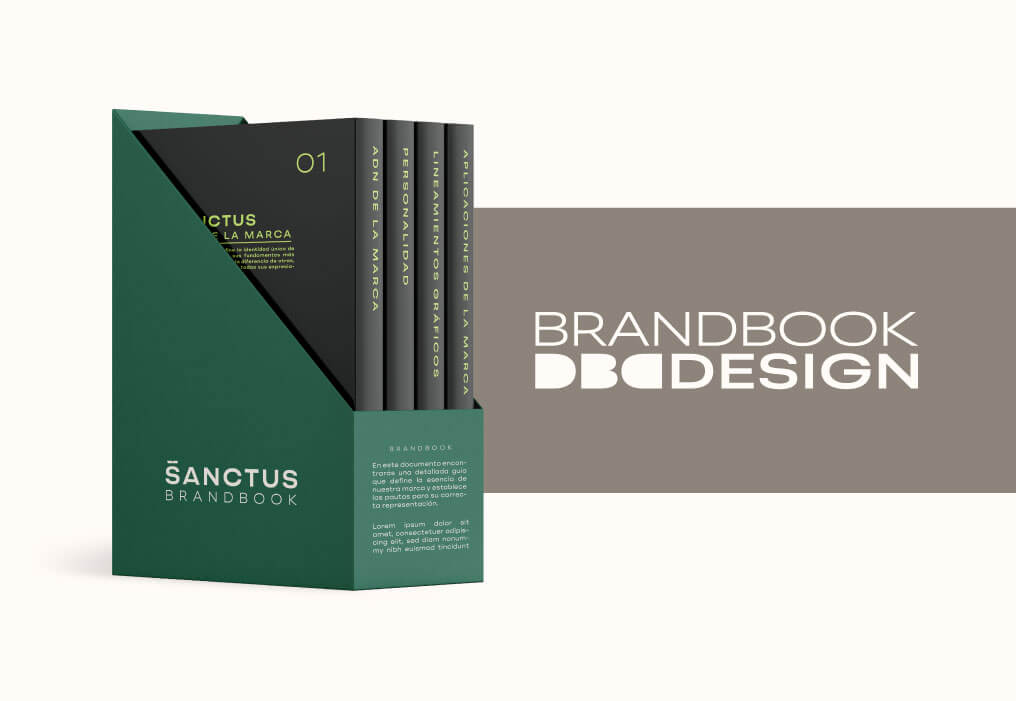Brandbook (by DBC Design)

What is a Brandbook and what should it include?
In the world of branding and design, a brandbook (also known as a brand manual or brand guidelines) is an essential tool for maintaining the visual and conceptual consistency of a brand. More than just a technical document, it’s a strategic guide that defines a brand’s identity and ensures its proper application across all touchpoints.
Here’s a breakdown of the key sections a brandbook should include, based on a real example:

1. Brand DNA
This section defines the essence of the brand — what makes it unique, its core purpose, and the central message it aims to communicate. It typically includes:
Brand statement: A powerful phrase that summarizes the brand’s philosophy or manifesto.
Mission and vision: What the brand aims to achieve and how it plans to get there in the long term.
Value proposition: Explains what makes the brand stand out and why people should care. This is where emotional connection and business purpose meet.


2. Brand Personality
This defines how the brand behaves and communicates — as if it were a person. It includes:
Core values: The principles that guide the brand’s behavior. These might include ideas like minimalism, authenticity, elegance, or innovation.
Voice and tone: Describes how the brand speaks. Is it serious or casual? Does it use plain or poetic language? Is it direct or suggestive? This ensures all written communication (ads, social posts, packaging) sounds consistent.
Brand philosophy: A deeper explanation of the brand’s “why.” Often supported by keywords, metaphors, or symbolic ideas that reinforce the emotional and conceptual world the brand inhabits.
3. Visual Guidelines
This section establishes how the brand should look in every context. It includes:
Logo and symbol: Explanation of the primary logo and its variations (horizontal, vertical, with or without tagline, symbol only, etc.). It also includes construction details, clear space, and minimum sizes.
Color palette: Displays the official brand colors with their respective codes (Pantone, HEX, RGB, CMYK), and usage guidelines to maintain harmony and contrast.
Typography: Details the brand’s official fonts, their hierarchy (headings, subheadings, body text), and how to use them to preserve a consistent identity.
Visual style: Some brandbooks also include directions for photography, illustration, layout, or general composition rules.


4. Brand Applications
This section showcases how the brand identity is implemented in real-world formats:
Print materials: Business cards, stationery, packaging, labels, etc.
Digital applications: Website, social media, banners, newsletters, and more.
Brand experiences: In more developed brands, this includes recommendations for events, physical spaces, retail, or even staff behavior.
Why Is a Brandbook Important?
A well-structured brandbook is key to:
– Maintaining consistency across all platforms and media.
– Saving time for designers and marketing teams.
-Helping external collaborators understand and respect the brand identity.
– Clearly communicating the essence and personality of the brand — both internally and externally.
A brandbook isn’t just for big companies. Any business that wants to build a strong, coherent identity should have one. Whether you’re a startup, personal brand, or established company, a brandbook is a guide that helps your brand speak clearly, elegantly, and faithfully to its values.
